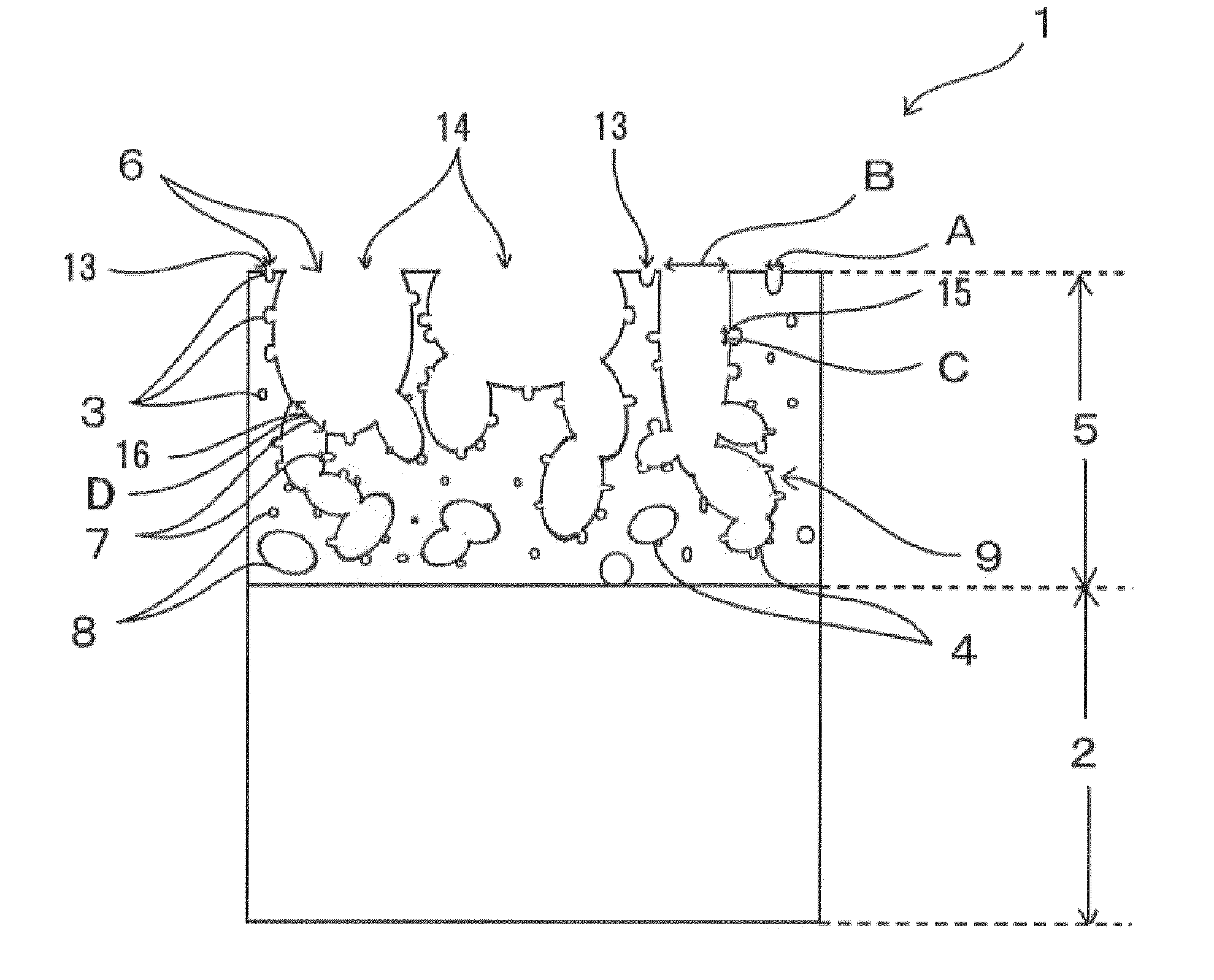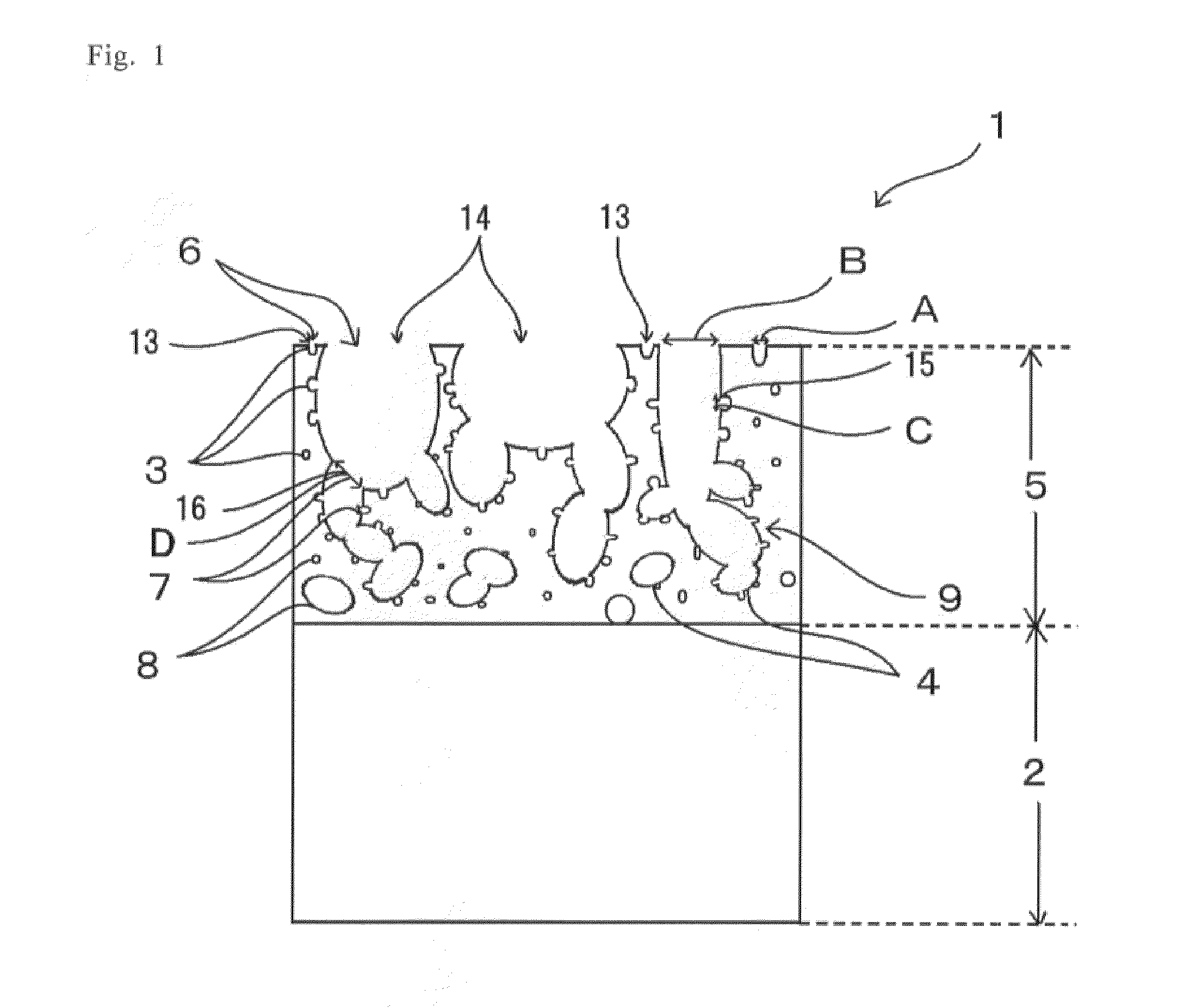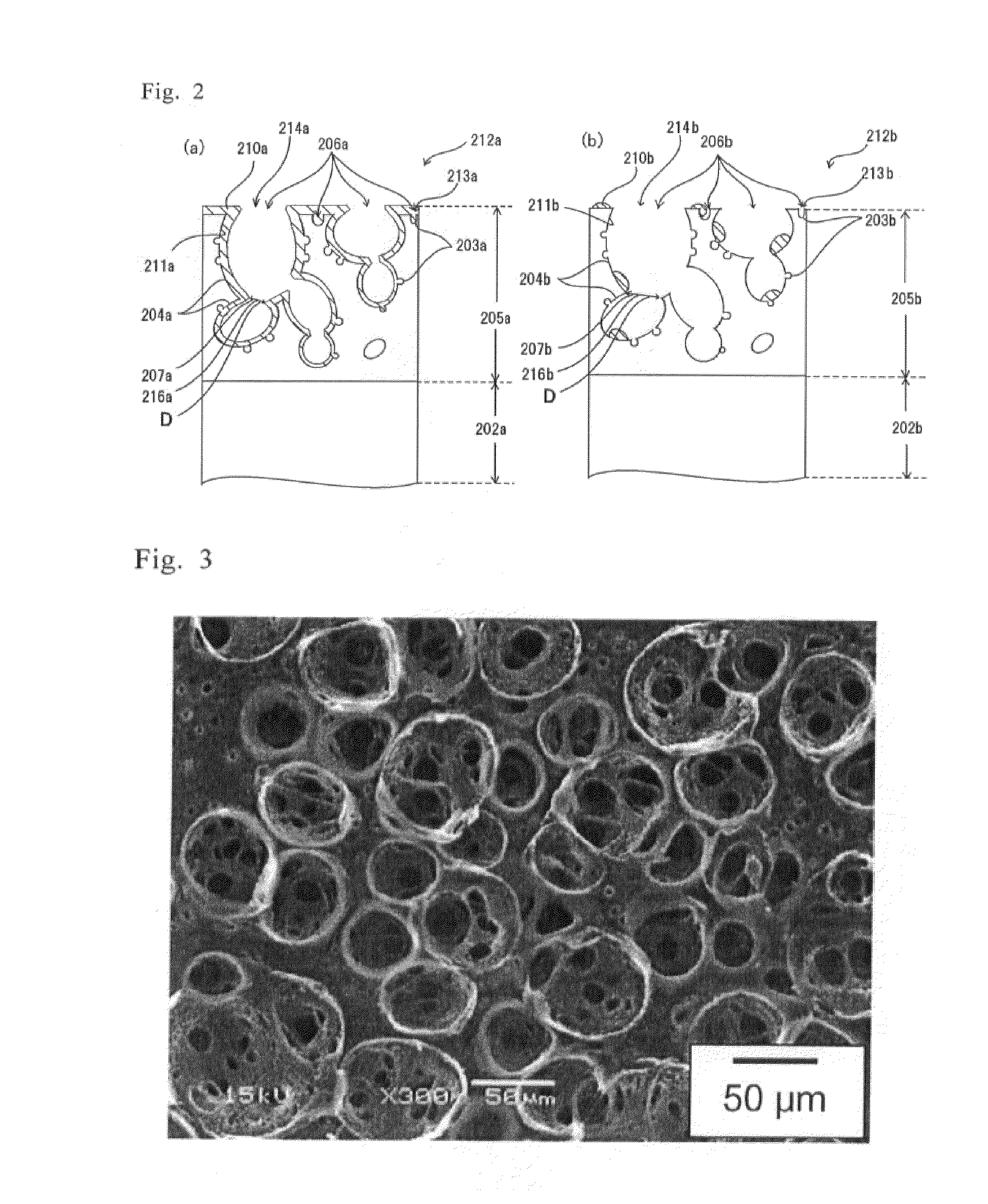Article with foamed surface, implant and method of producing the same
- Summary
- Abstract
- Description
- Claims
- Application Information
AI Technical Summary
Benefits of technology
Problems solved by technology
Method used
Image
Examples
working example 1
[0129]This is a working example in which PEEK was used as material for an article with a foamed surface.
[0130]The article was prepared through the following steps.
[0131]A surface of a disc (with 10 mm in diameter and 2 mm in thickness, a 450G product manufactured by Victrex Corporation) was ground with #1000 sandpaper. The ground disc was immersed in concentrated sulfuric acid whose concentration was 97% for five minutes. The disc was taken out of the sulfuric acid and then immersed in pure water for five minutes. Subsequently, the disc was repeatedly washed until the pH of pure water used for the washing turned neutral. A micro-porous base with micro pores in the surface thereof was obtained. An observation of the surface of the micro-porous base with a scanning electron microscope revealed that the surface had many pores with a diameter from 1 to 2 μm and the inside of the surface had a network structure.
[0132]Then the obtained micro-porous base was immersed in an aqueous solution...
working example 2
[0141]An article with a foamed surface was obtained with the same method as in Working Example 1, except that an aqueous solution of sodium carbonate whose concentration was 500 mM was used in place of the aqueous solution of sodium bicarbonate.
[0142]The surface of the prepared article was observed under a scanning electron microscope at 300 magnifications. The resulting image is shown in FIG. 5. Many open pores and many passages formed in the inner walls of the open pores were observed in the surface of the article, in the same way as in Working Example 1. Small open pores originating from small pores had a diameter ranging from 2 to 4 μm, and large open pores originating from large pores had a diameter ranging from 30 to 80 μm.
[0143]The average diameter of the small open pores and that of the large open pores were calculated with the same method as in Working Example 1: The former was 3.1 μm, and the latter was 45 μm.
[0144]The proportion of the area of the large open pores to that...
working example 3
[0145]An article with a foamed surface was obtained with the same method as in Working Example 1, except that an aqueous solution of potassium carbonate whose concentration was 500 mM was used in place of the aqueous solution of sodium bicarbonate.
[0146]The surface of the prepared article was observed under a scanning electron microscope at 300 magnifications. The resulting image is shown in FIG. 6. Many open pores and many passages formed in the inner walls of the open pores were observed in the surface of the article, in the same way as in Working Example 1. Small open pores originating from small pores had a diameter ranging from 1 to 2 μm, and large open pores originating from large pores had a diameter ranging from 20 to 30 μm.
[0147]The average diameter of the small open pores and that of the large open pores were calculated with the same method as in Working Example 1: The former was 1.6 μm, and the latter was 23 μm.
[0148]The proportion of the area of the large open pores to t...
PUM
| Property | Measurement | Unit |
|---|---|---|
| Fraction | aaaaa | aaaaa |
| Diameter | aaaaa | aaaaa |
| Diameter | aaaaa | aaaaa |
Abstract
Description
Claims
Application Information
 Login to View More
Login to View More - R&D
- Intellectual Property
- Life Sciences
- Materials
- Tech Scout
- Unparalleled Data Quality
- Higher Quality Content
- 60% Fewer Hallucinations
Browse by: Latest US Patents, China's latest patents, Technical Efficacy Thesaurus, Application Domain, Technology Topic, Popular Technical Reports.
© 2025 PatSnap. All rights reserved.Legal|Privacy policy|Modern Slavery Act Transparency Statement|Sitemap|About US| Contact US: help@patsnap.com



